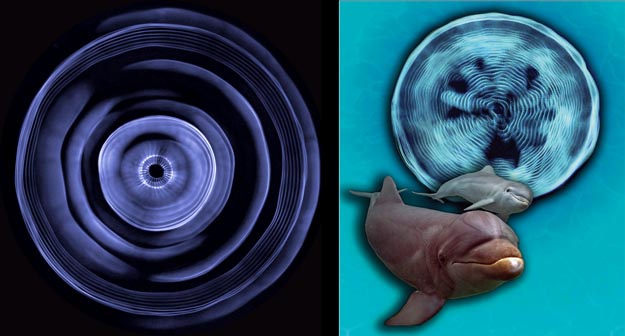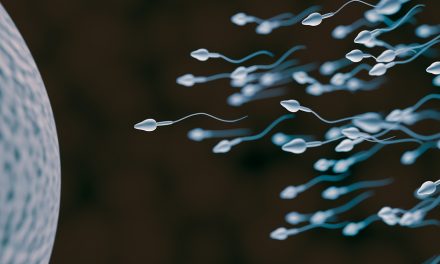New research from scientists in Miami and the UK suggests that dolphins speak to each other using a type of holographic language that MIGHT be understood by humans. Just typing that sentence made me grin from ear to ear. Can you imagine having a conversation with a dolphin??
Research team leader Jack Kassewitz said, “Our recent success has left us all speechless. We now think it is safe to speculate that dolphins may employ a ‘sono-pictorial’ form of language, a language of pictures that they share with each other. If that proves to be true, an exciting future lies ahead for interspecies communications.”

Scientists were able to make the above print using a complicated process of recording and isolating the high-pitched clicks dolphins make to estimate distances and visualize objects underwater. Here was their process:
- Scientist Jim McDonough, got into the water and submerged himself in front of female dolphin “Amaya” in a pool at the Dolphin Discovery Center in Puerto Aventuras, Mexico.
- Next, he exhaled all the air from his lungs- to overcome his natural buoyancy and to avoid bubbles from a breathing apparatus- and the dolphin directed her echolocation at him.
- Researchers then used high-specification audio equipment to record the dolphin’s signal, and sent the recordings to CymaScope laboratory in the United Kingdom.
- Acoustic physics researcher, John Stuart Reid, made two-dimensional images from these recordings and then used photo analysis to extract data and three-dimensionally imprint the signal onto a water membrane.
This test, a decade in the making, has revealed that dolphins relay “quasi-holographic properties of sound” as their echolocation reacts with water. It appears they can also see surface features, like the weight belt McDonough was wearing during the experiment. More study is needed but researchers believe that dolphin echolocation signals could result in even more detailed images than they previously believed.
From the article:
“When a dolphin scans an object with its high frequency sound beam, each short click captures a still image, similar to a camera taking photographs,” Reid said. “Each dolphin click is a pulse of pure sound that becomes modulated by the shape of the object.”
“When we discovered that dolphins not exposed to the echolocation experiment could identify objects from recorded dolphin sounds with 92 percent accuracy, we began to look for a way for to see what was in those sounds,” Kassewitz said.
“Seeing the 3-D print of a human being left us all speechless,” Kassewitz said. “For the first time ever, we may be holding in our hands a glimpse into what cetaceans see with sound. Nearly every experiment is bringing us more images with more detail.”
Source: Your News Wire












